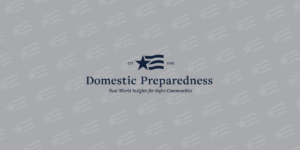

Strategies for Public Information in Times of Crisis
Anthony S. Mangeri
March 30, 2016
Providing information to the public in times of crisis is so critical to disaster operations that it is included as one of the five major components of the National Incident Management System. Mass media is one of many tools available to help public information officers disseminate essential information and convey risks to the public before, during, and after a disaster.

Breaking News & Getting It Right
Thomas J. Lockwood and Catherine L. Feinman
March 30, 2016
Establishing mutual trust between opposing groups in a time-sensitive environment can be a huge
challenge. Trust and communication gaps exist between news media and public information officers. It is
important to understand the different operational procedures, the roles and responsibilities, and the
effects that each stakeholder has during a large-scale incident.

Helping Children & Youths Cope With Disaster Media Coverage
Jennifer First and J. Brian Houston
March 23, 2016
In Missouri, researchers are helping adults learn how children and youths perceive disaster media coverage in order to better cope with the abundance of information and images that surround them following a significant incident. Coping strategies and resources addressing media coverage must be tailored to the individual needs and developmental level of each child or youth.

Big News About Cyberthreats
Dawn Thomas
March 23, 2016
The emergency services sector faces many daily challenges that are exacerbated when data breaches and cyber attacks occur. Addressing public concern for incidents with life and safety consequences is one of the greatest challenges that public information officers must be prepared to manage as the number and frequency of cyberthreats continue to rise.

Active Shooters & Public Access Bleeding Control Kits
Team You Can Act
March 22, 2016
Harvard’s National Preparedness Leadership Initiative (NPLI) plays a key role in bringing together
thought leaders and professionals to address complex challenges and enhance the nations preparedness
efforts. One NPLI meta-leadership project contributed to a new nationwide campaign that empowers
bystanders to act and potentially save lives when someone is critically injured by an active shooter.

Saving Lives With Hashtags & Geolocation
Emily Allen
March 16, 2016
Devastating incidents have occurred as long as humans have been on Earth. However, the way in which people respond to them has changed dramatically with the introduction of modern technology. Cries for help may be hidden in hashtags and geolocation, so filtering social media can be critical for response efforts.

Accuracy & Trust in Information Dissemination
Anna Rose
March 9, 2016
Time pressures during emergencies are not an excuse to release inaccurate information to the
public. Regular communication and engagement with media sources help facilitate the flow of reliable
information. Relationships built on mutual trust and respect between news reporters and public affairs
officers ensure timely and accurate public reporting during a crisis.

Television Talking Heads & Disasters
Cedric Leighton
March 9, 2016
Television coverage of a disaster portrays many people trying to explain what happened. For those
who are charged with leading emergency response and disaster relief agencies, the diversity of media
outlets and the different kinds of experts the press calls upon to help analyze cataclysmic events can
be overwhelming.

Digital Humanitarians
Hannah Zitner
March 8, 2016
When the deadliest and most destructive storm of 2012 came pummeling through the Northeast – decimating homes, cutting power, downing communications, and ultimately killing close to 120 people on U.S. soil – states of emergencies were declared in nine states. The Federal Emergency Management Agency as well as state, tribal, and local responders had their work cut out in the wake of Hurricane Sandy.

When a City Is Burning – Or Not
Connor Scott
March 2, 2016
In early 2015, the entire city of Baltimore was overrun with rioters and the city was set ablaze. At least that is what the world saw on news reports. As devastating as the civil unrest was to a relatively small portion of the city, the situation was exacerbated by reports of “citywide” chaos and destruction.

